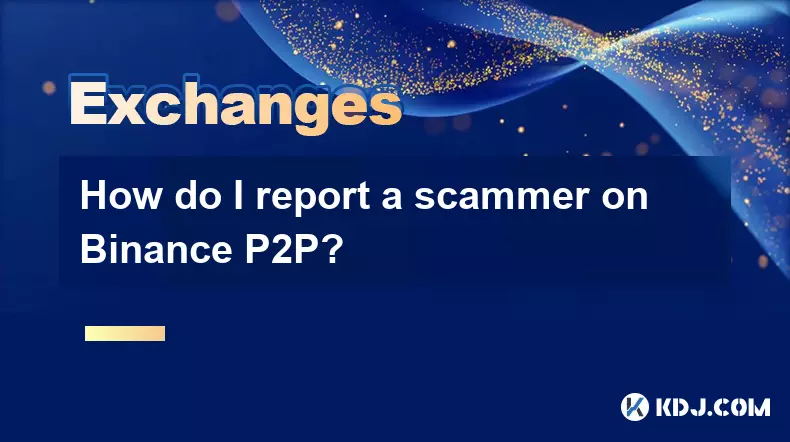-
 bitcoin
bitcoin $115692.075601 USD
5.13% -
 ethereum
ethereum $4162.931611 USD
11.68% -
 bnb
bnb $1310.063287 USD
17.56% -
 tether
tether $1.000983 USD
0.00% -
 xrp
xrp $2.534505 USD
8.16% -
 solana
solana $198.235737 USD
13.49% -
 usd-coin
usd-coin $1.000236 USD
0.02% -
 dogecoin
dogecoin $0.207352 USD
12.89% -
 tron
tron $0.323043 USD
3.62% -
 cardano
cardano $0.701559 USD
11.88% -
 hyperliquid
hyperliquid $39.924597 USD
8.30% -
 chainlink
chainlink $18.934457 USD
11.56% -
 ethena-usde
ethena-usde $1.000552 USD
0.02% -
 stellar
stellar $0.340575 USD
7.05% -
 bitcoin-cash
bitcoin-cash $545.011757 USD
8.86%
Is it safe to keep my crypto on Coinbase?
Coinbase secures 98% of assets in cold storage, uses multi-sig wallets, and has crime insurance, but users face risks from phishing, SIM swaps, and lack of private key control.
Oct 13, 2025 at 08:36 pm

Understanding Coinbase’s Security Infrastructure
1. Coinbase operates one of the most regulated cryptocurrency platforms in the United States, adhering to strict compliance standards set by financial authorities. This regulatory alignment enhances user trust and ensures that operational practices meet legal benchmarks for data protection and asset custody.
2. The platform stores approximately 98% of its users’ digital assets in offline cold storage systems. These air-gapped environments are physically isolated from the internet, drastically reducing exposure to remote hacking attempts and large-scale cyber intrusions.
3. Coinbase maintains crime insurance coverage for digital assets held across its storage systems, protecting against theft, cybersecurity breaches, and physical loss. This insurance does not cover losses due to individual account compromises such as phishing or device breaches but safeguards the custodial reserves managed by the exchange.
4. Multi-signature wallet protocols are employed to authorize transactions, requiring multiple cryptographic approvals before funds can be moved. This layered authorization process adds a robust defense mechanism against unauthorized withdrawals.
User Account Protection Measures
1. Two-factor authentication (2FA) is strongly encouraged and integrated into every Coinbase account. Users can enable 2FA via authenticator apps or security keys, significantly reducing the risk of unauthorized access even if login credentials are compromised.
2. Session monitoring and anomaly detection systems actively analyze login patterns and transaction behaviors. Unusual activities trigger immediate alerts and temporary restrictions, allowing users to verify legitimacy or lock their accounts remotely.
3. Biometric login options, including fingerprint and facial recognition, are available on mobile devices to strengthen access control beyond traditional passwords. These features reduce reliance on easily phished textual credentials and improve personal device security.
4. Email and SMS notifications provide real-time updates on deposits, withdrawals, and setting changes. While SMS-based alerts carry inherent risks due to SIM-swapping threats, pairing them with app-based 2FA mitigates potential exploitation.
Risks Associated with Exchange-Based Storage
1. Keeping crypto on any centralized exchange inherently introduces counterparty risk. Even with strong security, users do not hold private keys, meaning they rely entirely on Coinbase’s operational integrity and availability during market volatility or technical failures.
2. Regulatory actions or government seizures could result in temporary freezes on funds. Historical precedents from other exchanges demonstrate that legal disputes or compliance investigations may restrict user access without immediate recourse.
3. Phishing attacks targeting Coinbase users remain prevalent, with counterfeit websites and fake customer support channels designed to steal login information and bypass 2FA protections. User vigilance is critical, as no amount of platform security can prevent socially engineered breaches.
4. Service outages during high-traffic events—such as major token listings or market crashes—can delay withdrawals. While these interruptions are typically short-lived, they highlight dependency on infrastructure stability when funds are not self-custodied.
Frequently Asked Questions
What happens to my crypto if Coinbase shuts down?
Coinbase is required to maintain customer asset records and has outlined procedures for returning funds in the event of insolvency. Historically, regulated exchanges under similar oversight have returned user holdings after ceasing operations, though the process may take weeks or months depending on legal proceedings.
Can the government seize crypto stored on Coinbase?
Yes, law enforcement agencies can issue asset seizure orders if illegal activity is suspected. Because Coinbase collects identity information through KYC verification, authorities can directly link accounts to individuals and compel the platform to freeze or surrender assets under court mandates.
Does Coinbase have a history of security breaches?
Coinbase has not suffered a major hot wallet breach resulting in customer fund loss. However, some users have reported account takeovers due to SIM-swap attacks and phishing. The platform itself has maintained its core custodial systems secure, but individual account vulnerabilities persist.
Is it better to use Coinbase Wallet instead of the main exchange?
Coinbase Wallet is a non-custodial solution where users control their private keys, offering greater autonomy than holding assets on the exchange. It functions independently from the Coinbase.com trading platform and connects to decentralized applications, reducing reliance on centralized infrastructure.
Disclaimer:info@kdj.com
The information provided is not trading advice. kdj.com does not assume any responsibility for any investments made based on the information provided in this article. Cryptocurrencies are highly volatile and it is highly recommended that you invest with caution after thorough research!
If you believe that the content used on this website infringes your copyright, please contact us immediately (info@kdj.com) and we will delete it promptly.
- XRP Price Prediction: Weekend Rollercoaster or Rally?
- 2025-10-12 08:45:16
- Bittensor (TAO): Super Bullish Signals Point to Potential 2x Rally
- 2025-10-11 10:25:12
- Silver Price Correction: Navigating the Dip & Identifying Key SEO Keywords
- 2025-10-11 10:25:12
- Decoding Crypto Trends: Bittensor's Bull Run, Cardano's Dip, and LivLive's Presale Buzz in 'Uptober 2025'
- 2025-10-12 08:45:16
- MoonBull: The Crypto Meme Coin Promising 1000x Gains?
- 2025-10-11 10:30:01
- Crypto Payroll Revolution: Stablecoins, Altcoins, and the Future of Salary Payments
- 2025-10-11 10:30:01
Related knowledge

What is a crypto exchange like Binance or Coinbase?
Oct 13,2025 at 09:01pm
Bitcoin's Role in Decentralized Finance1. Bitcoin remains the cornerstone of decentralized finance, serving as a primary store of value within the cry...

How do I change the currency display in the Binance app?
Oct 10,2025 at 11:36am
Changing Currency Display in the Binance App1. Open the Binance app on your mobile device and log into your account. Navigate to the home screen where...

How do I claim airdrops on my Binance account?
Oct 14,2025 at 12:00am
Understanding Airdrop Mechanics on Binance1. Airdrops on Binance are promotional distributions of free tokens or coins conducted by blockchain project...

How to clear the cache for the Binance app?
Oct 12,2025 at 02:55pm
Understanding Decentralized Exchanges in the Crypto Ecosystem1. Decentralized exchanges (DEXs) operate without a central authority, allowing users to ...

How do I report a scammer on Binance P2P?
Oct 12,2025 at 10:19am
Understanding the Binance P2P Reporting Mechanism1. When engaging in peer-to-peer transactions on Binance, users are exposed to various counterparties...

Why is the Binance app not working?
Oct 13,2025 at 06:54pm
Common Reasons for Binance App Malfunctions1. Network connectivity issues can significantly impact the performance of the Binance app. Users may exper...

What is a crypto exchange like Binance or Coinbase?
Oct 13,2025 at 09:01pm
Bitcoin's Role in Decentralized Finance1. Bitcoin remains the cornerstone of decentralized finance, serving as a primary store of value within the cry...

How do I change the currency display in the Binance app?
Oct 10,2025 at 11:36am
Changing Currency Display in the Binance App1. Open the Binance app on your mobile device and log into your account. Navigate to the home screen where...

How do I claim airdrops on my Binance account?
Oct 14,2025 at 12:00am
Understanding Airdrop Mechanics on Binance1. Airdrops on Binance are promotional distributions of free tokens or coins conducted by blockchain project...

How to clear the cache for the Binance app?
Oct 12,2025 at 02:55pm
Understanding Decentralized Exchanges in the Crypto Ecosystem1. Decentralized exchanges (DEXs) operate without a central authority, allowing users to ...

How do I report a scammer on Binance P2P?
Oct 12,2025 at 10:19am
Understanding the Binance P2P Reporting Mechanism1. When engaging in peer-to-peer transactions on Binance, users are exposed to various counterparties...

Why is the Binance app not working?
Oct 13,2025 at 06:54pm
Common Reasons for Binance App Malfunctions1. Network connectivity issues can significantly impact the performance of the Binance app. Users may exper...
See all articles










































































